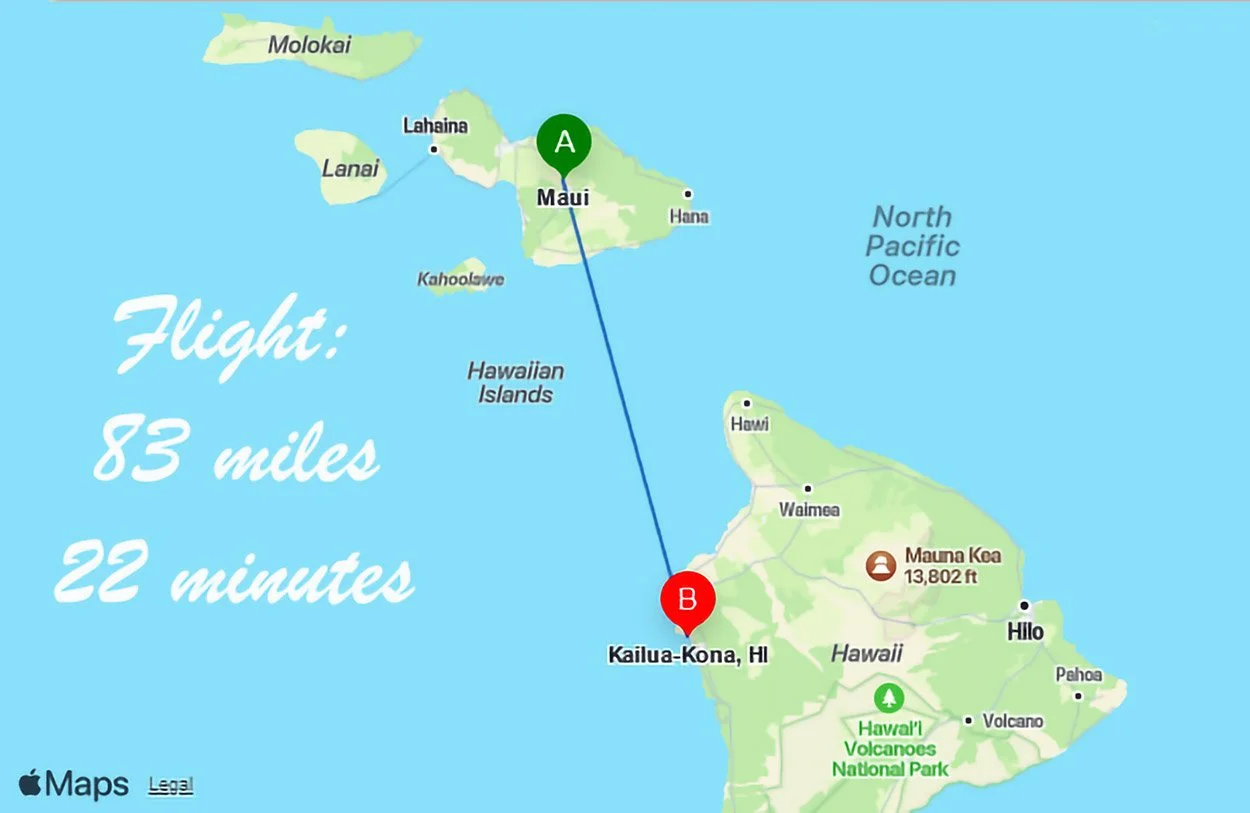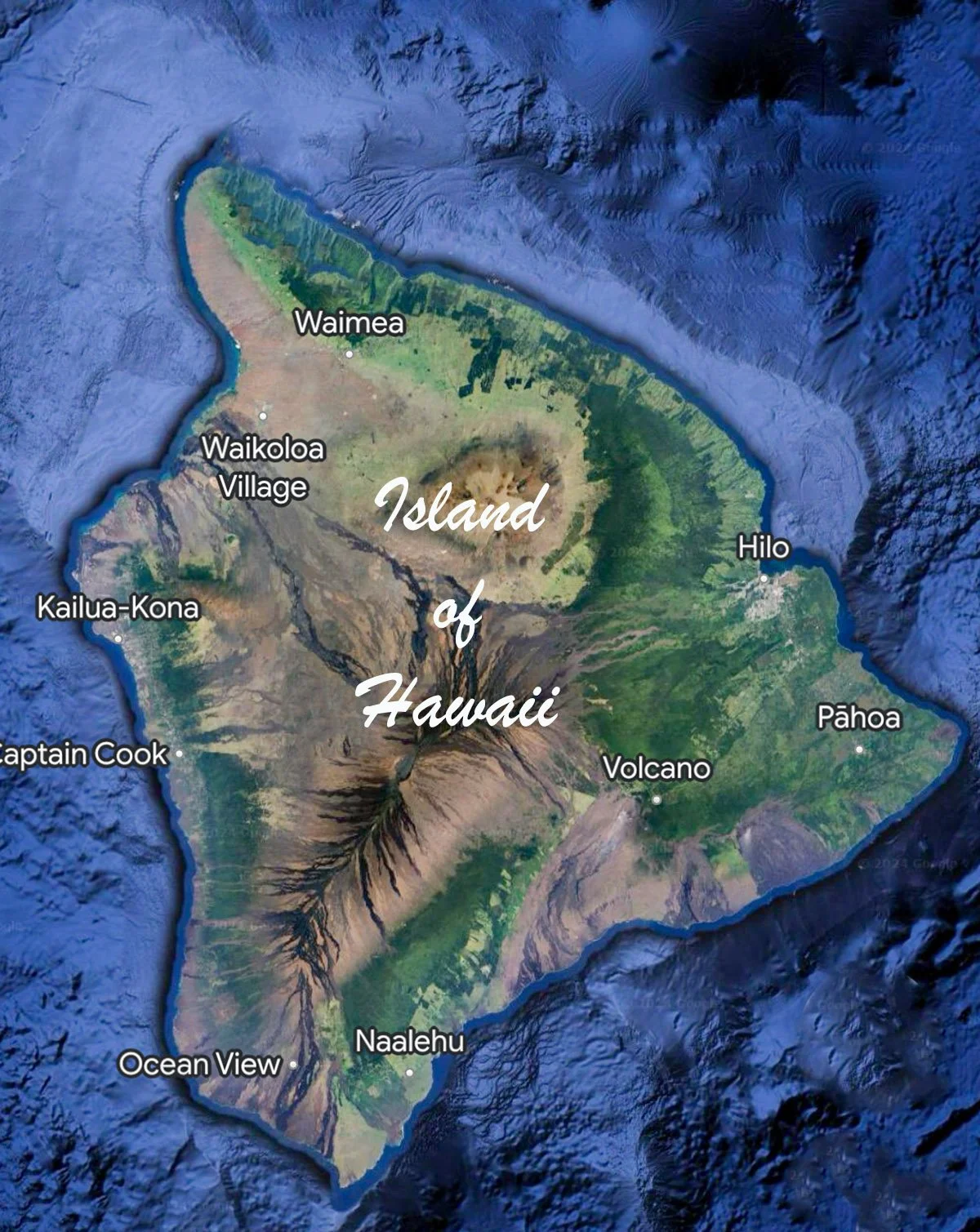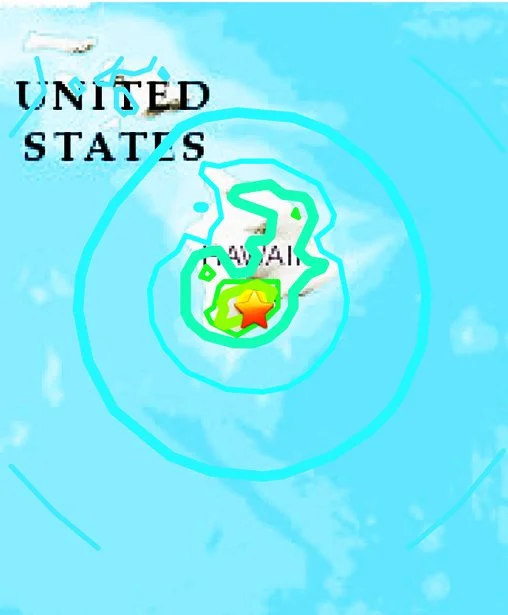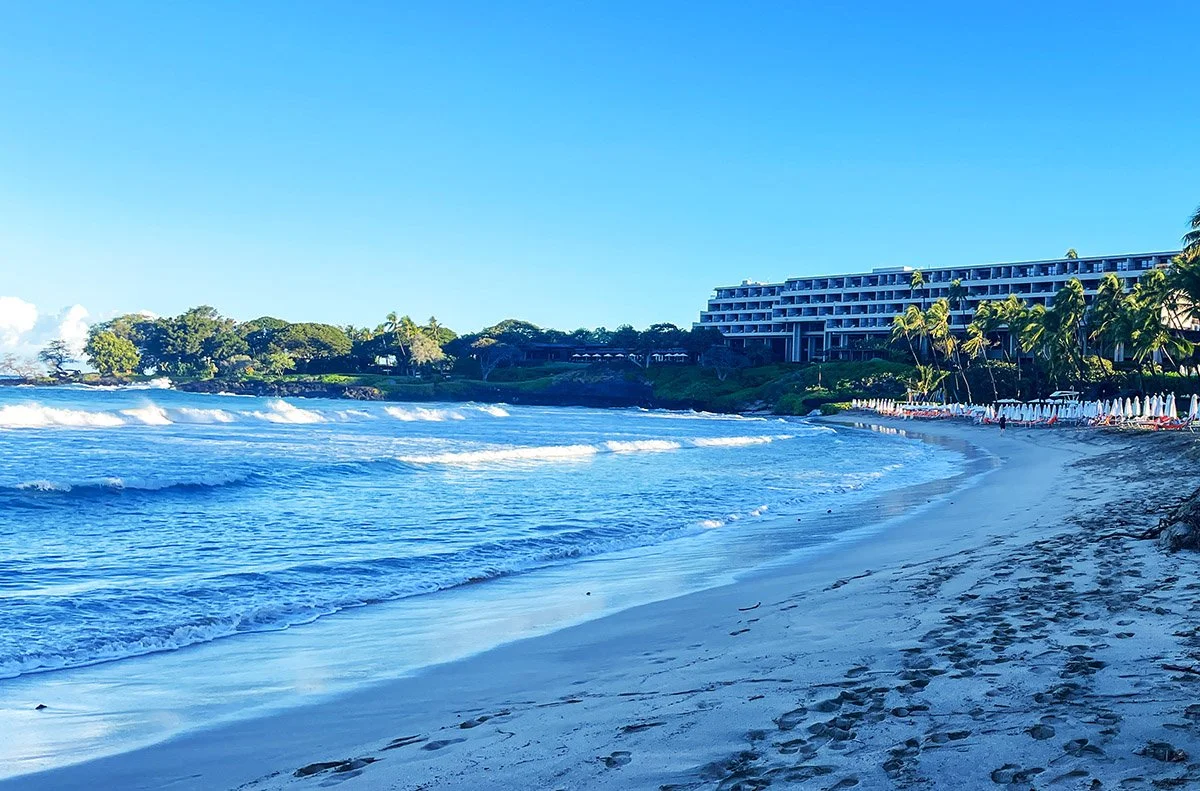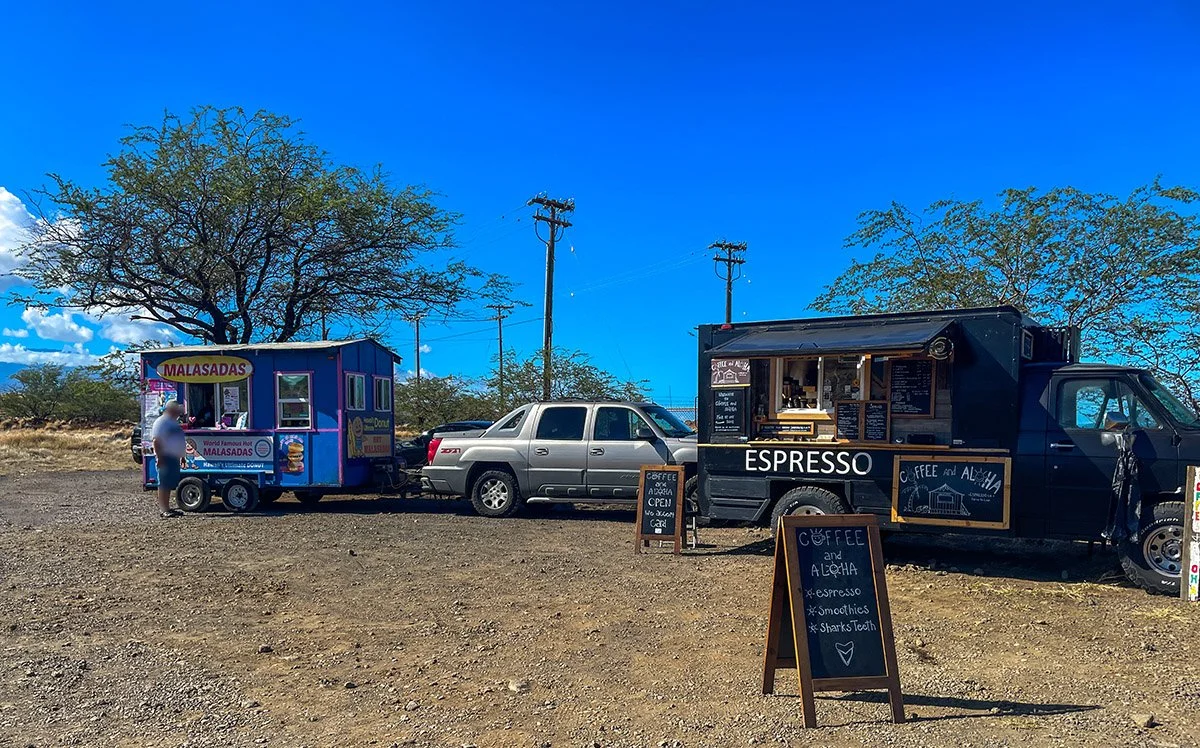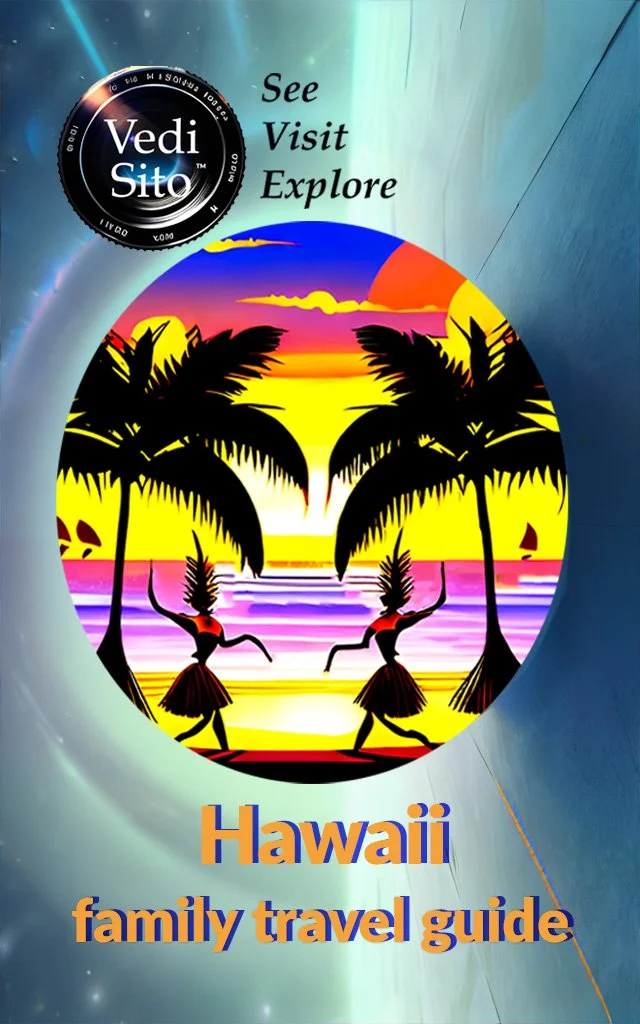Hawaiian Islands - Big Island
Maui is only a “hop, skip and a - 83 mile long - jump” to Kona.
Maui to Kona flight
Prior to departure, the flight attendant instructed passengers in window seats to open their window shades during taxiing, takeoff, and landing. At the time, I thought it was to provide a scenic view, but upon later reading, “situational awareness” appears to be the answer. In the event of an emergency evacuation, open shades allow attendants and passengers the ability to see outside to determine if it’s safe to open and use emergency exits. That makes sense, as does the fact that attendants don’t want to create “situational apprehension” by providing a full explanation at the time.
The Island of Hawaiʻi, at approximately 4,030 square miles, is the largest of the island chain. The island is formed by five volcanoes: Hualālai, Kohala, Mauna Kea, Mauna Loa and Kīlauea, with Kīlauea being the world’s most active volcano, pouring lava into the ocean (and accounting for the island’s continuing growth).
Satellite image, Big Island of Hawaii
Kīlauea is known for its frequent earthquakes. In October 2023, 320 earthquakes were registered in one 24-hour period. Kīlauea, and the Volcanoes National Park, are on the southern part of the island. Since our travels were planned for the northern portion of the island, it didn’t register that we might experience an earthquake. How naive!
A few days after arriving, hanging out in Hāwī, we experienced a violent shaking. Funny how the mind works, or doesn’t. Just the much-spoken-about winds that blow hereabouts, I thought. Surely, it must be a gust. Well, a shouted “earthquake!” by a local brought some clarity, prompting a “what now” reaction. Fortunately, it was quickly over, but the memory continues.
The USGS report below shows the 5.7 quake’s origin, and how it reverberated through and beyond the island.
Kīlauea earthquake
The 1971 lyrics of Carole King’s popular song come to mind:
I feel the earth
Move
Under my feet
I feel the sky tumbling down, uh tumbling down
I feel the earth move
Under my feet
I feel the sky tumbling down, uh tumbling down
Without a doubt, the earth moved under our feet, but, fortunately, the sky did not tumble down.
Hāwī is located in North Kohala, an area with a long and storied history. It is the birthplace of King Kamehameha, founder and first ruler of Hawaii. The original statute of Kamehameha I is prominently and proudly displayed in the town of Kapaʻau, just beyond Hāwī. Haley’s comet passed over Hawaiʻi in 1758, the year of his birth; a sign that confirmed to Hawaiians at that time of the child’s destiny with greatness.
King Kamehameha I statute, Kapaʻau
The Kohala Sugar Company encompassed 9,500 acres and operated for 110 years before shutting down in 1973. The Lyman Museum & Mission House in Hilo has an excellent collection of records and drawings about the Company.
The Lyman Museum & Mission House is featured
in VediSito’s Hawaii travel guide.
More information about the sugar industry is contained in Global Plantations in the Modern World, and, in particular regarding Hawaii, Plantation Colonialism in Late Nineteenth-Century Hawai‘i: The Case of Chinese Sugar Planters.
Presently, Hāwī, with a population of about 2,200, is a quiet, laid-back community, featuring a Saturday’s Farmer’s Market, the Bamboo Restaurant & Gallery, and the intersection with the not-to-be-missed Kohala Mountain Road which winds along the flanks of the extinct Kohala volcano to the picturesque and bustling town of Waimea.
Kohala Mountain Road
Southwest view fom Kohala Mountain Road
Kohala, the volcano, is extinct, but it actively boasts a fabulous view, varied vegetation and an allure for hikers. The eastern slope is dominated by the Pu’u O Umi Reserve, while on the west gently sloped grasslands dominate.
Waimea has about 10,000 permanent residents and reportedly millions of visitors each year. We were in the latter category. It’s easy to understand the attraction. Our Saturday morning visit included a Farmer’s Market, a gallery showing and a stop to view the Parker School.
Waimea is also the headquarters of two astronomical observatories located on Mauna Kea, the W. M. Keck Observatory and the Canada–France–Hawaii Telescope.
Kahilu Theater Mural, Waimea
Being in or on the water is a “must do” when visiting Hawaii, and an early morning paddle with the gracious folks at the Kawaihae Canoe Club was both a privilege and a pleasure. Although I had college rowing experience, this was different. Handed a paddle and told to sit in seat 5, I was able to retain and rotate my paddle (with helpful instructions and encouragement from Barb in seat 6), stroking - somewhat - in sync with the crew members. I learned later that each position in the outrigger canoe has a special function and that Seat 5 “needs to be a truly intuitive and adaptable paddler” and “must be quickly able to react to prevent a capsize (huli).” I can’t claim to be intuitive and adaptable or that I prevented a huli, but at least I didn’t cause one.
If you’re on the Big Island and particularly on the west shore area, the Kawaihae Canoe Club offers a wonderful opportunity for anyone 12 years and older to paddle in an authentic outrigger canoe. You can learn about the Kohala coastline including Pu'ukoholā, a National Historic Landmark, preserving the ruins of the last major Ancient Hawaiian temple. For more information, email kcckupuna@gmail.com. The Kawaihae Canoe Club is a 501(c) 3 organization and proceeds go to the Club’s keiki (children) program.
Guided by knowledgeable residents, we discovered beautiful Kauna'oa Beach at the Mauna Kea Resort. It’s reputation as one of the finest beaches on the island is well deserved. Parking is limited so plan to arrive early. Non-Hawaii resident visitors should be prepared to pay an entrance fee ($21 during our visit). With over a quarter mile of sandy-bottomed shoreline, the beach offers a perfect opportunity to walk, wade, swim or, if sufficiently skilled and equipped, surf. We opted to walk/wade/swim.
Kauna'oa Beach at Mauna Kea Resort
On our final day, we stopped en route to the Kona airport at food trucks for espressos and a malasada, a rich, eggy doughnut sprinkled in sugar with a choice of fillings. While waiting, we read about happenings in and around the area.
Roadside Malasadas and Espresso
News and Upcoming Events
Next on our itinerary is the island of Oahu.
Ready to visit the Islands?
VediSito’s Hawaii Family Travel Guide will help you plan your trip!
